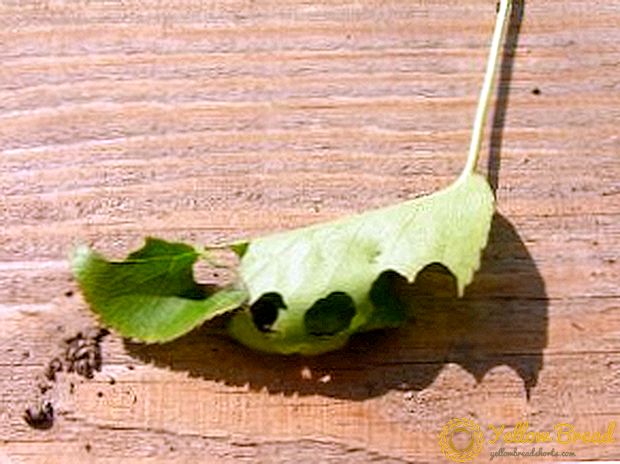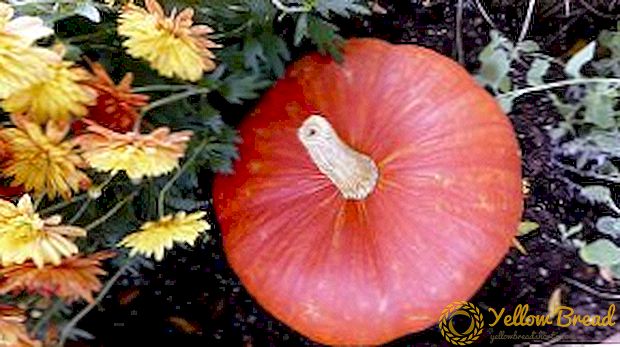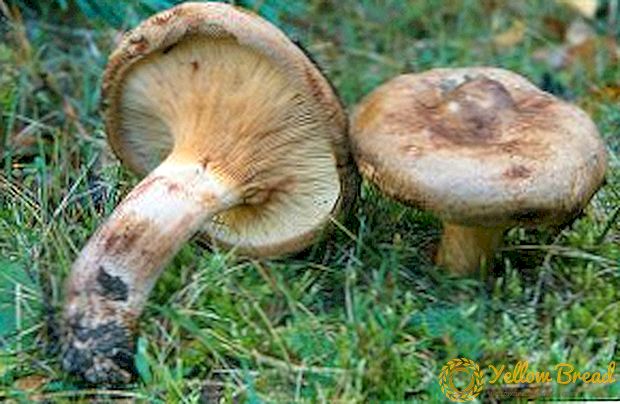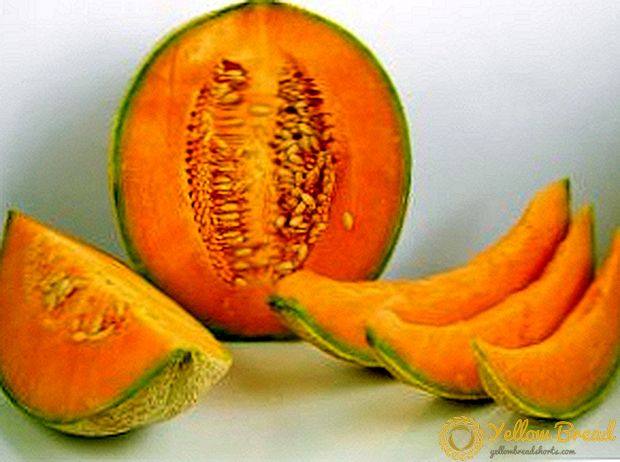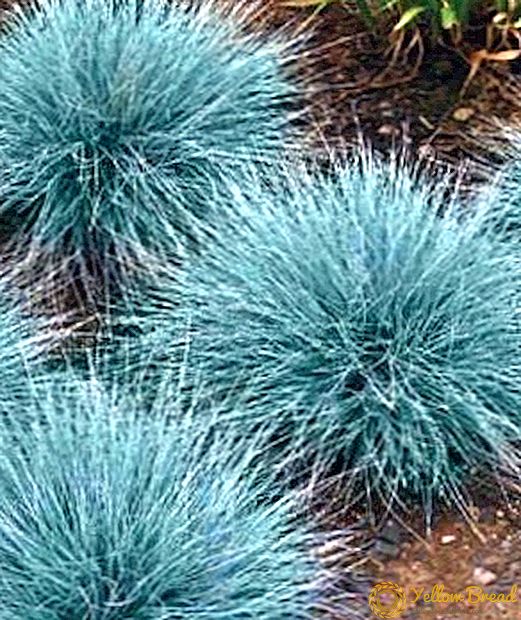 Roses - the true decoration of any garden. These beautiful plants have been popular with flower growers all over the world for centuries. More than 3000 varieties of these flowers are grown in culture. We dwell on English roses in detail, namely, we will get acquainted with the unique variety "Graham Thomas".
Roses - the true decoration of any garden. These beautiful plants have been popular with flower growers all over the world for centuries. More than 3000 varieties of these flowers are grown in culture. We dwell on English roses in detail, namely, we will get acquainted with the unique variety "Graham Thomas".
- Breeding history
- Description and characteristics
- Growing conditions
- Preparation and planting seedlings
- Grade Care
- Watering
- Fertilizer
- Pruning
- Protection against diseases and pests
- Breeding features
- Shelter for the winter
Breeding history
English roses - incredibly elegant and sophisticated flowers, which had a crazy popularity in the XX century and returned to the fashion in the 80s. In 1983, David Austin was bred for an exceptional variety, which he named after his friend, also a specialist in the field of roses, Graham Thomas.  At the exhibition in Chelsea, the flower fascinated and fell in love with itself instantly thanks to an unusual yellow cupped buds and an incredible aroma. This variety was formed by the crossing of "Charles Austin" and "Iceberg."
At the exhibition in Chelsea, the flower fascinated and fell in love with itself instantly thanks to an unusual yellow cupped buds and an incredible aroma. This variety was formed by the crossing of "Charles Austin" and "Iceberg."
Description and characteristics
It is impossible to describe the words "Graham Thomas" by words without looking at her photo, and only when you examine it and understand what all its charm consists in, can you proceed to a verbal description.
It seems that this flower has inherent, if not all, then most of the shades of yellow, which at the same time also differ depending on climatic conditions. Amazing double cupped buds reach a diameter of 8-10 cm. On the peduncle there are approximately 75 petals that protect the center of the bud, only slightly opening it due to its curved shape.  Inflorescences are usually collected from 6-8 flowers and give a unique light and sweet aroma. Very branchy shrubs are characterized by drooping shoots with dark green shiny leaves. The height and width of the bush vary from climatic conditions from 1.2 to 3.5 m in height and 100-120 cm in volume. Rose blooms 'Graham Thomas' continuouslythroughout the summer.
Inflorescences are usually collected from 6-8 flowers and give a unique light and sweet aroma. Very branchy shrubs are characterized by drooping shoots with dark green shiny leaves. The height and width of the bush vary from climatic conditions from 1.2 to 3.5 m in height and 100-120 cm in volume. Rose blooms 'Graham Thomas' continuouslythroughout the summer.
Growing conditions
Great for planting in sunny areas and in partial shade. the main thing - provide the plant 6-7 hours in the open sun. The place must be well ventilated.
The result of planting depends on the choice of location: for example, in a sunny, well-lit area you will get a compact bush with abundant flowering, and in a shady place you will find a tall bush with rare small buds. 
Preparation and planting seedlings
You can plant a rose in spring or autumn.
Seedlings need to be prepared in advance for planting, having previously preserved them in a root-forming solution for 24 hours, and only then proceed to planting in the soil at a rate of 50x50x50 cm, that is, the depth, width and distance between the plants must be equal.
Having prepared the landing holes, it is necessary it is good to moisten them - It is recommended to use 1 bucket of water for each well. After that, you can proceed directly to planting seedlings. Carefully straighten the roots and place them in the hole, then cover it with the substrate so that the graft bud goes deeper into the soil by at least 7 cm. Ramming the ground, and the next day you need to pile up the bushes and water them abundantly. 
Grade Care
English pedantry is inherent in this variety of roses, therefore all care procedures must be performed in a timely and proper manner. If you follow the simple rules, you are guaranteed to get a beautiful well-groomed shrub with abundant flowering.
Watering
Humidity - One of the components of success in the cultivation of grades "Graham Thomas." Watering should be moderate, but timely. As soon as the top layer of soil around the shrub has dried, you should start water procedures. The amount of water depends on the climatic conditions, so it is definitely not possible to determine it: you must rely on your experience and intuition. 
Fertilizer
Immediately after planting, at the beginning of the growing season, nitrogen fertilizers should be applied. Phosphorus and calcium guarantee a successful set of buds - it is better to make such dressing in May-June. In August and September, you can feed the roses with potassium. It is better to approach the fertilizer of this tender rose with care, and also to adhere to the principle that it is better to underfeed than overfeed.
Pruning
It all depends on your imagination and how you see the plant in your landscape design. Be sure to cut only the affected and drooping processes, as well as flower stalks that have faded. All the rest of the manipulation with pruning and the formation of shrubs, you can carry out to your taste. 
Protection against diseases and pests
All English roses do not tolerate excess moisture: because of her most often and sick plants. As a preventive measure, it is necessary to drain the soil well and not to flood the plant. In rainy weather should shake off the bush and the buds from the drops.
The most common disease of English roses, which develops precisely because of moisture and excessive rain - gray rot. This fungus infects the roots of the plant, sprouting in them. At the first signals of the occurrence of the disease, and they can be determined by the fact that the flowers and shoots begin to rot, it is necessary to remove the affected areas and disinfect the soil, for example, using Fitosporina-M, Alirin-B or Gamair.
I want to emphasize that the roses "Graham Thomas" with proper care, get sick and are affected by pests very rarely, as they are very viable and resistant.
Breeding features
Propagate such roses cuttings and layering.  The simplest and most subservient even to amateur gardeners is reproduction by layering. For this you need to choose a strong young escape, cut off the tip, insert a match there. Then you need to attach the stem to the ground, slightly prikopat and pour.
The simplest and most subservient even to amateur gardeners is reproduction by layering. For this you need to choose a strong young escape, cut off the tip, insert a match there. Then you need to attach the stem to the ground, slightly prikopat and pour.
Carry out the procedure in July-August, and in the spring you can separate the finished seedling from the mother plant.
Cutting is considered less successful, but it is also quite widely used. For cuttings choose the strengthened branches. A successful sapling is considered to be a stalk with 2-3 leaves, while 1 or 2 lower ones are removed, leaving only one leaf. Then the planting material is planted in the prepared fertilized, loosened and moistened soil at a distance of 20 cm from each other.
Shelter for the winter
Roses "Graham Thomas" are considered very winter hardy. Under the winter is a short pruning. The shrub is cut in such a way that only its base remains with several buds. Trimming should be done with a sharp, disinfected pruner. After the procedure, you need prikopat bush earth. It is better to take the soil for hilling in another corner of the garden, and not directly near the rose, because when digging up, you can injure the roots of the plant.  From above, the folded shrub is covered with a layer of foliage, sawdust or spruce branches. If your region has very severe winters, and the temperature drops below -30 ° C, cover the bush with a film for maximum protection. The distance between the film and the plant should be at least 15 cm.
From above, the folded shrub is covered with a layer of foliage, sawdust or spruce branches. If your region has very severe winters, and the temperature drops below -30 ° C, cover the bush with a film for maximum protection. The distance between the film and the plant should be at least 15 cm.
At the shelter poured a layer of foliage and covered with branches. In this house, the English rose is warm. In the spring, shelter is removed in stages: first, branches and leaves are removed, and the shrub is left under the film for several weeks. The material skips the sun's rays and protects the rose from the spring cold - in such greenhouse conditions, the shrub wakes up and develops faster.
In English, the rose is an amazingly gentle and charmingly beautiful creature that will certainly attract attention and beautify any garden plot. Aristocratic sophistication and delightful fragrance can conquer the heart and imagination of both a spoiled and novice grower.

